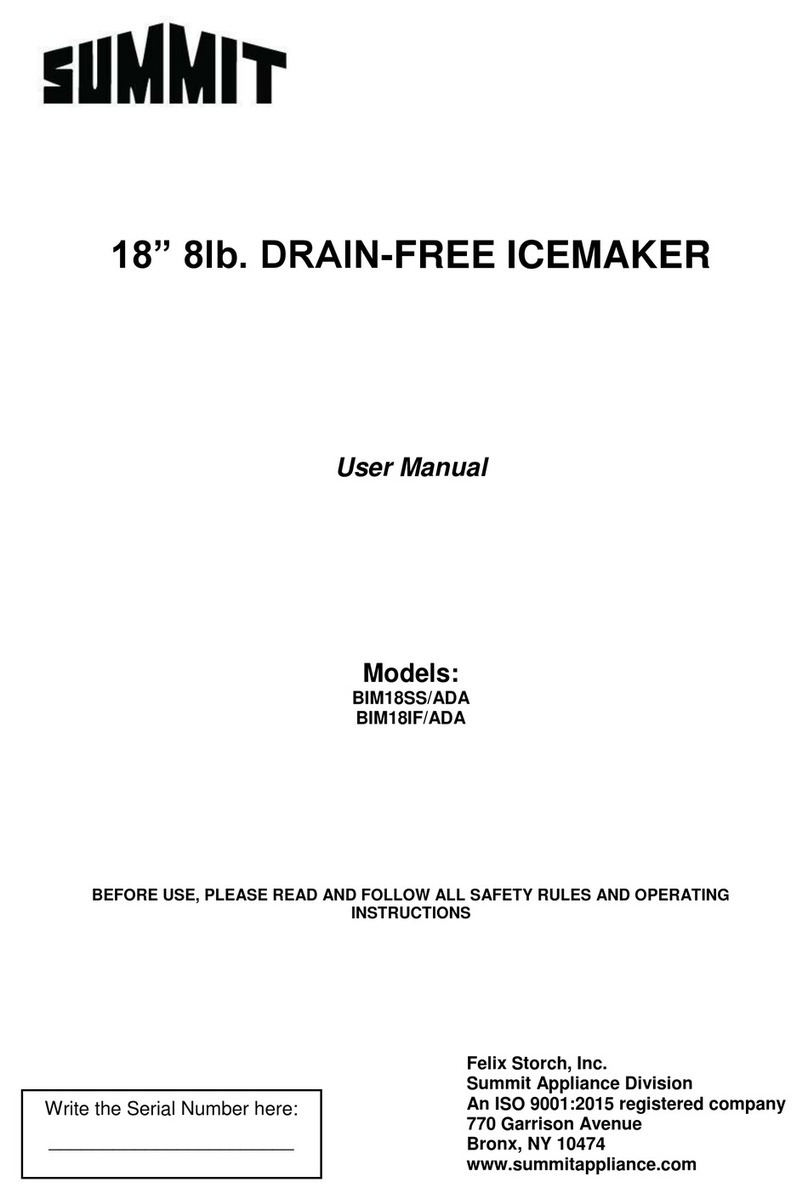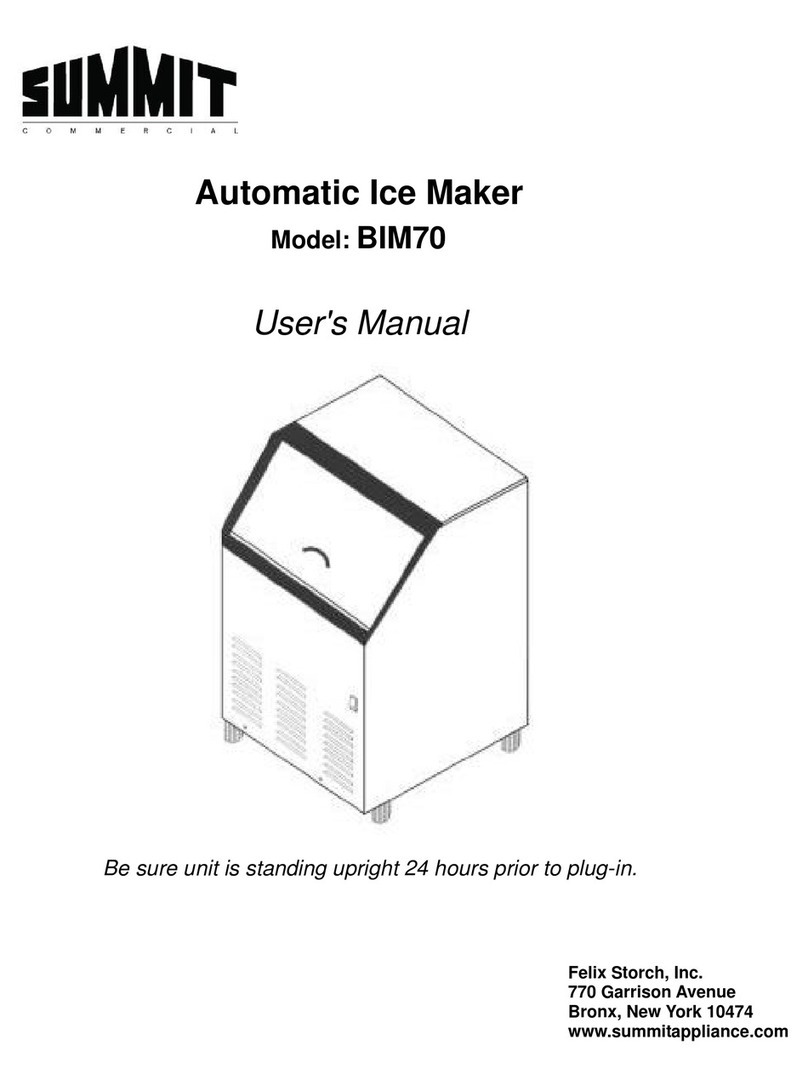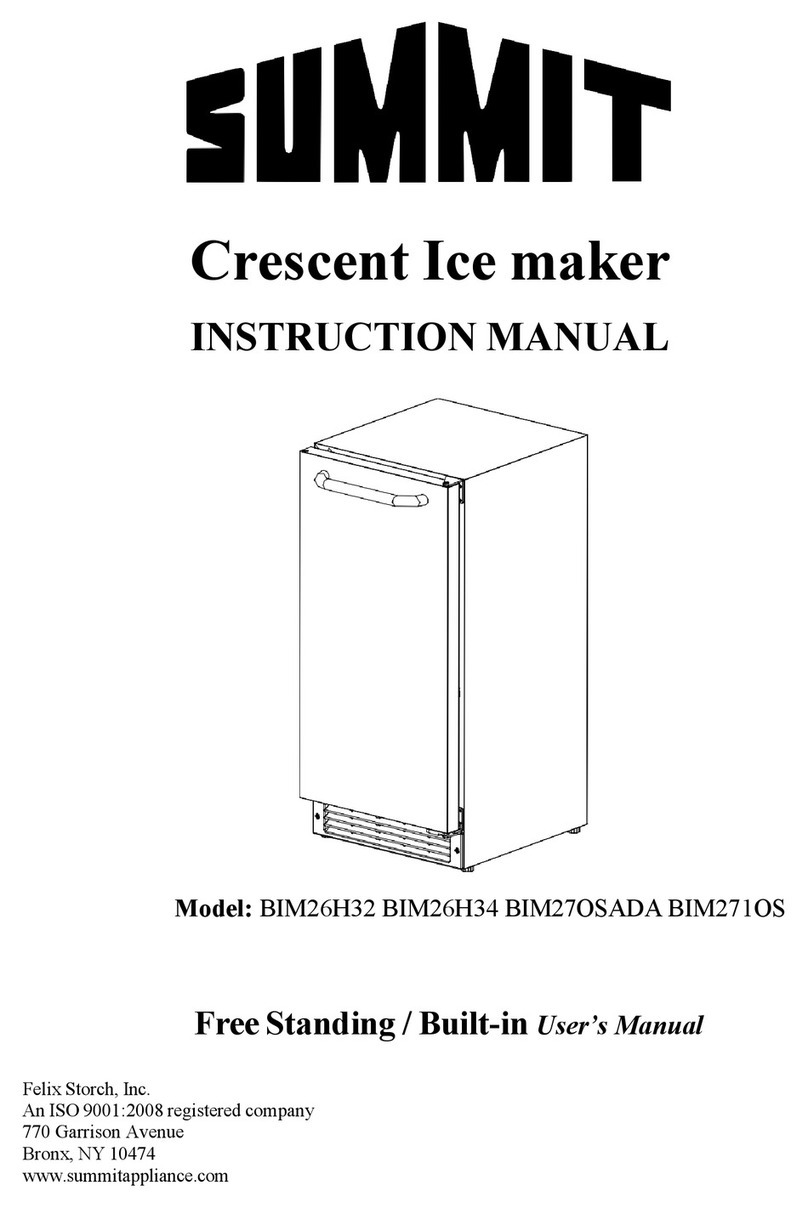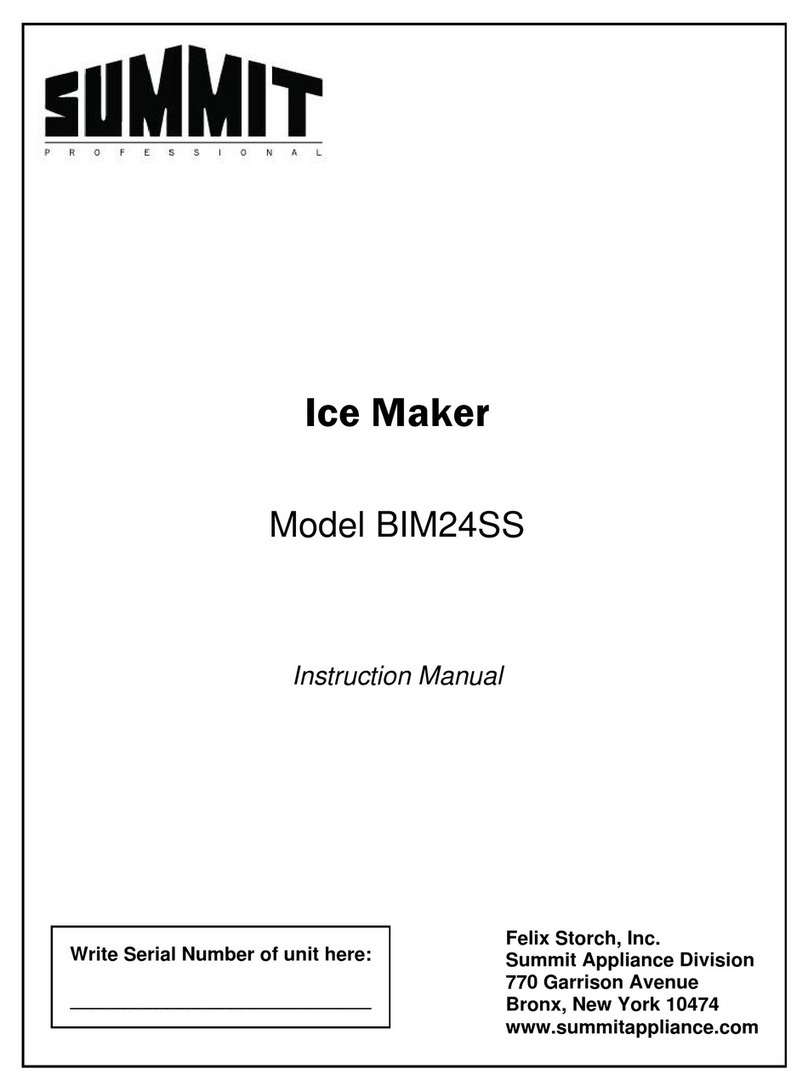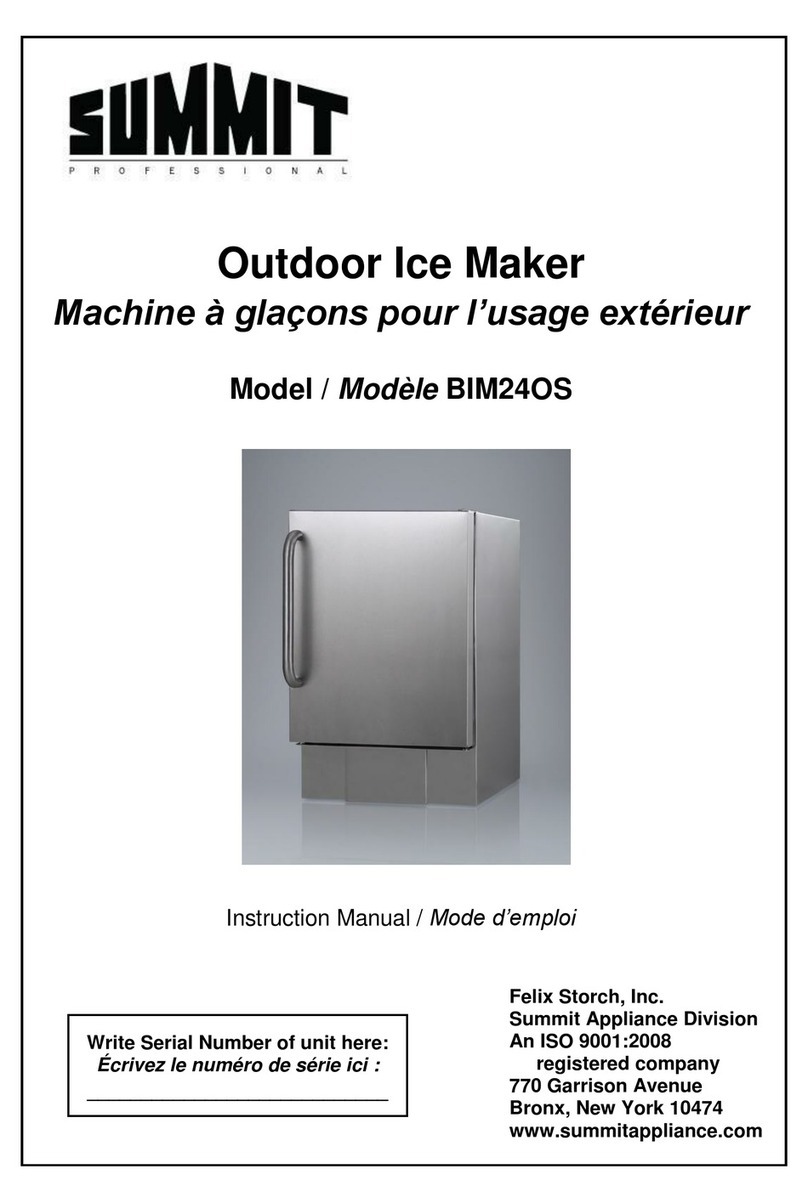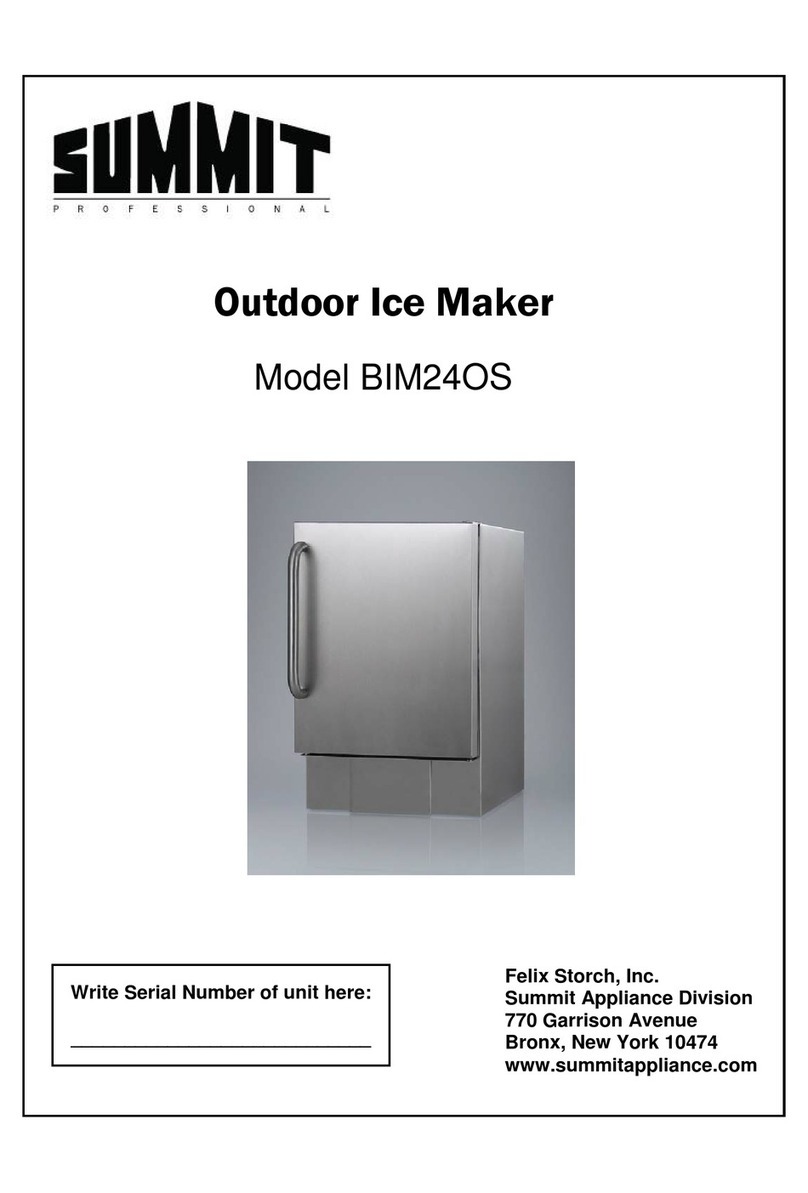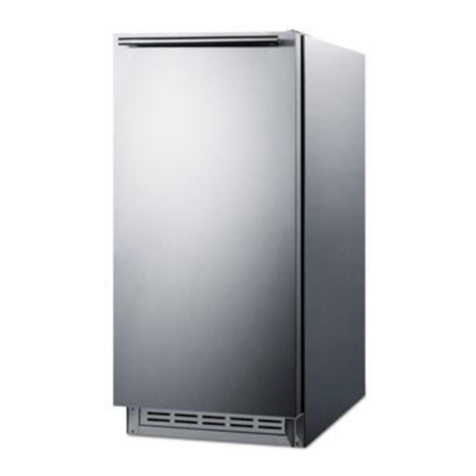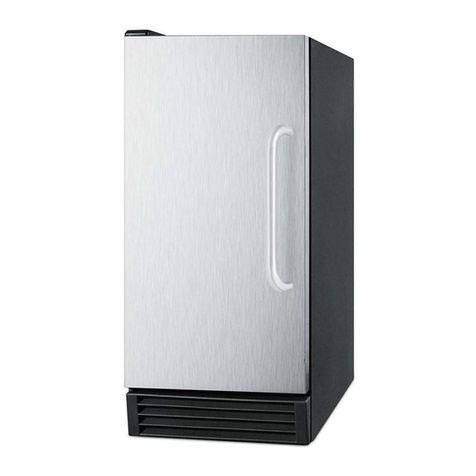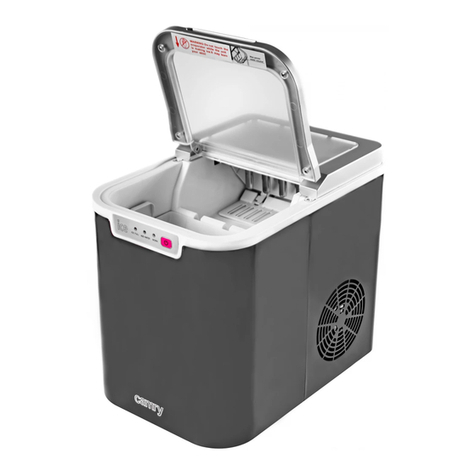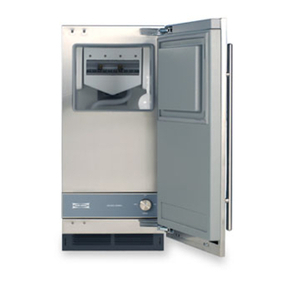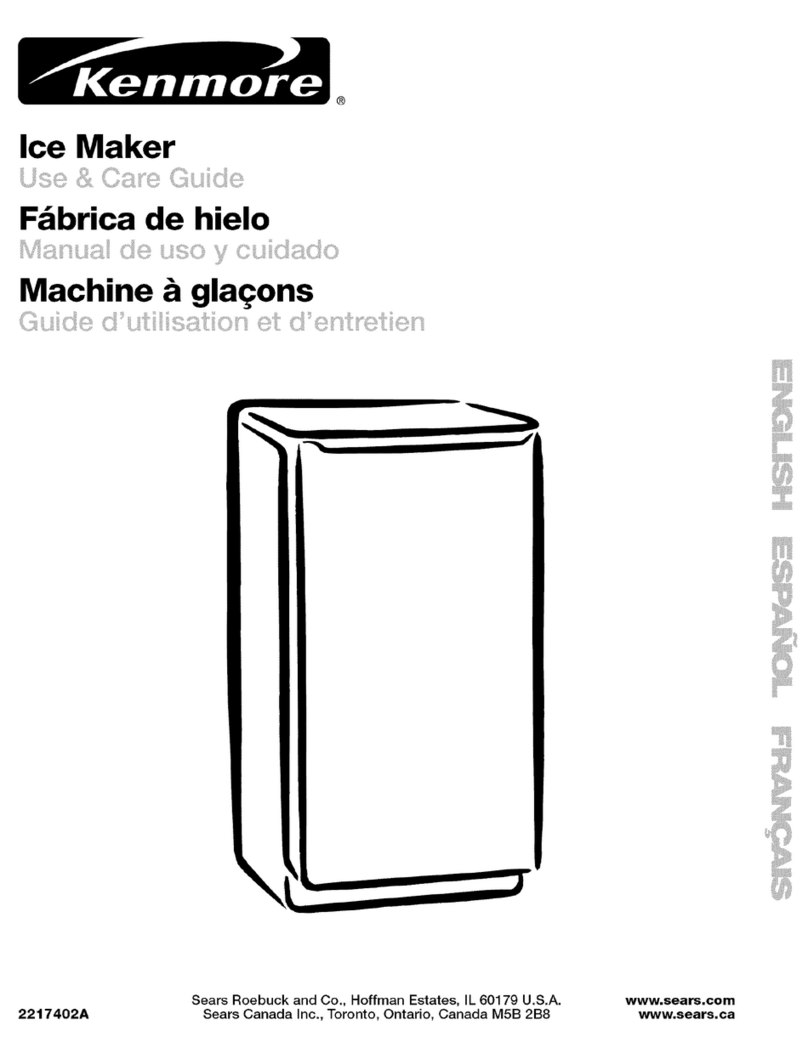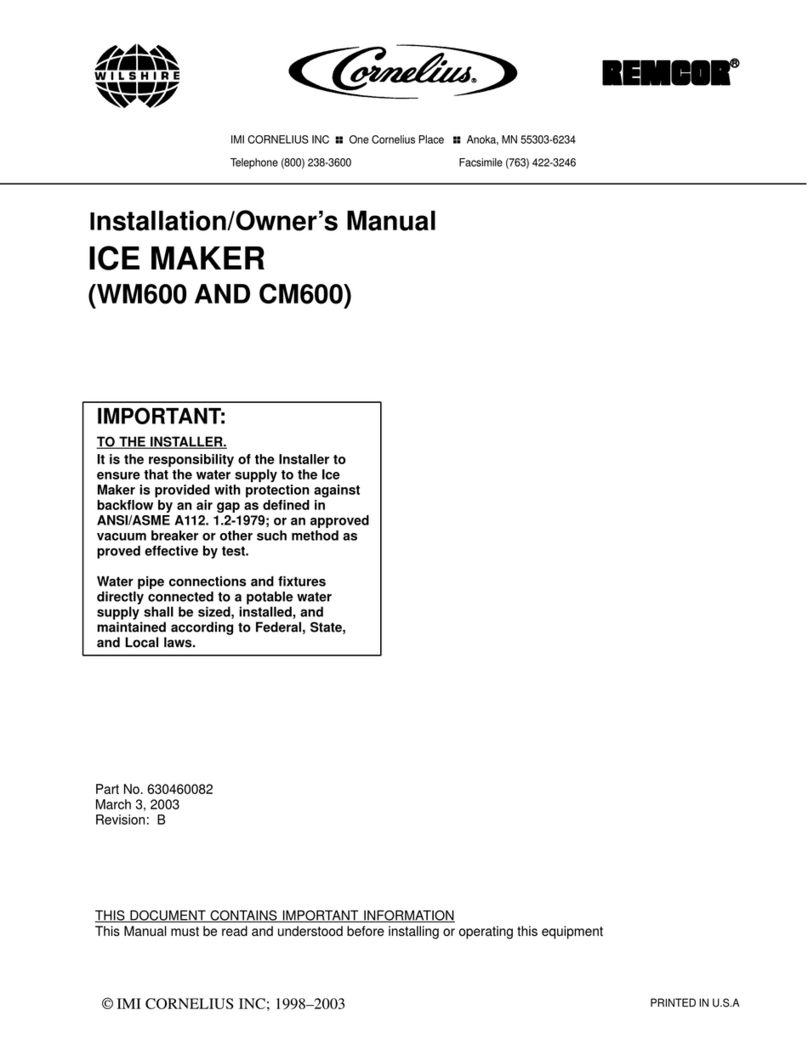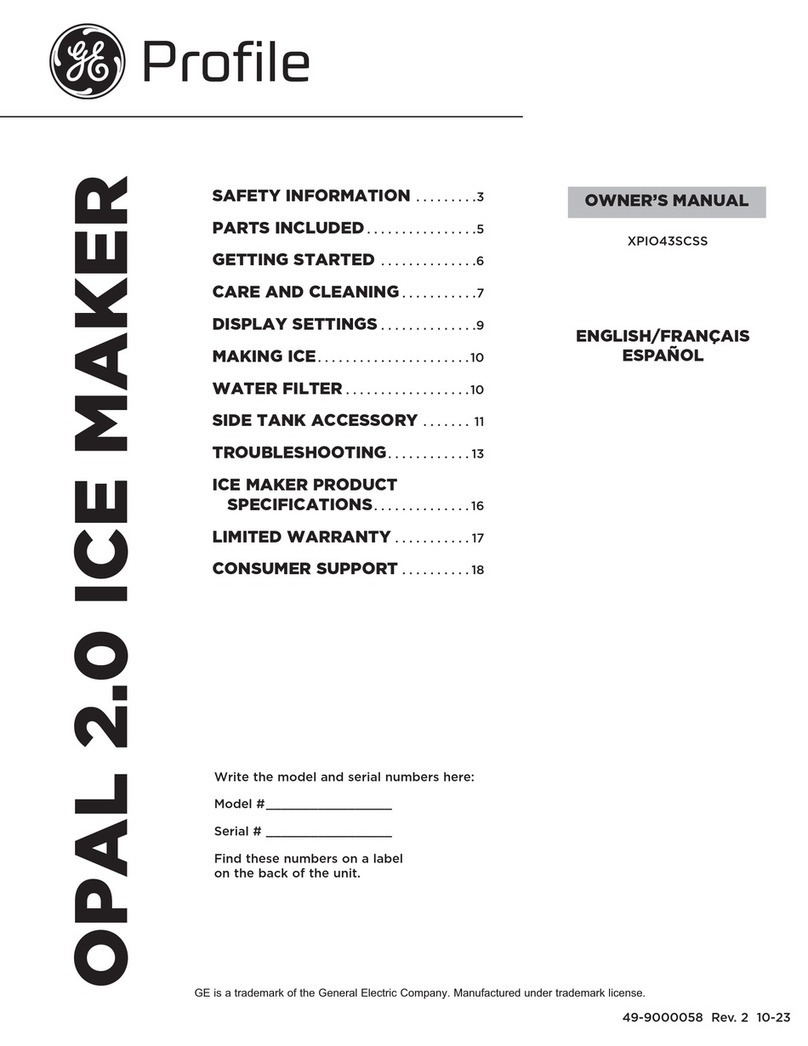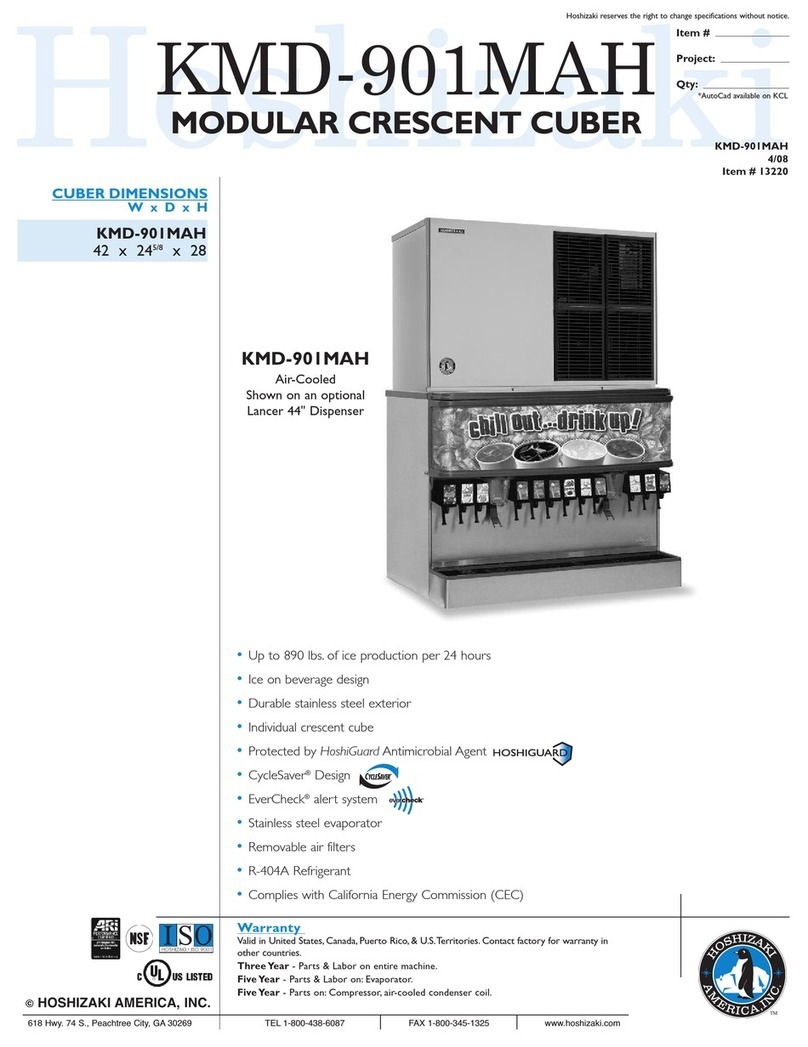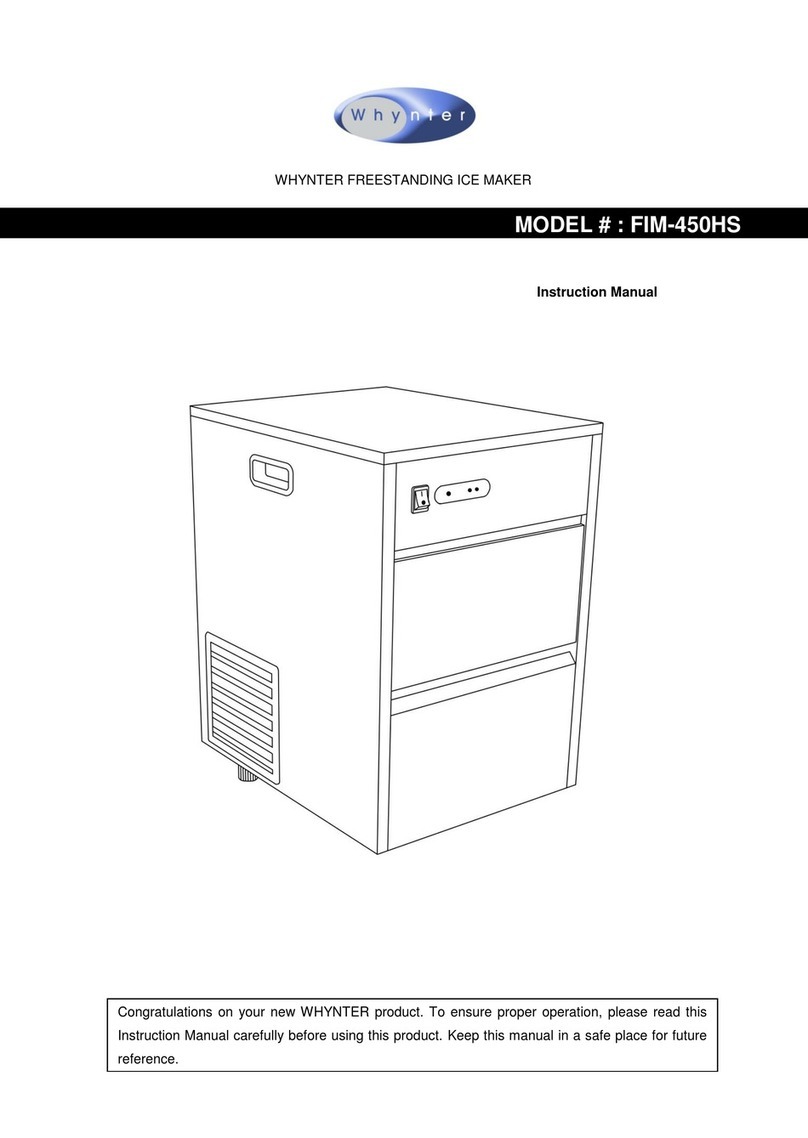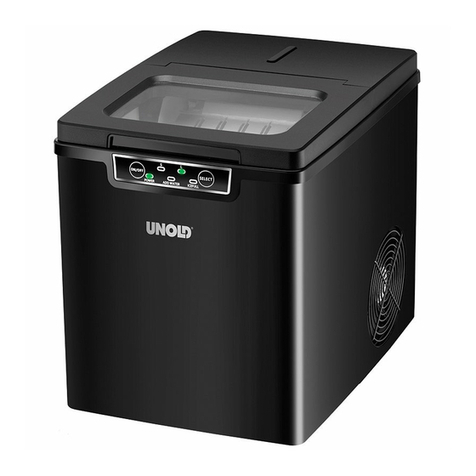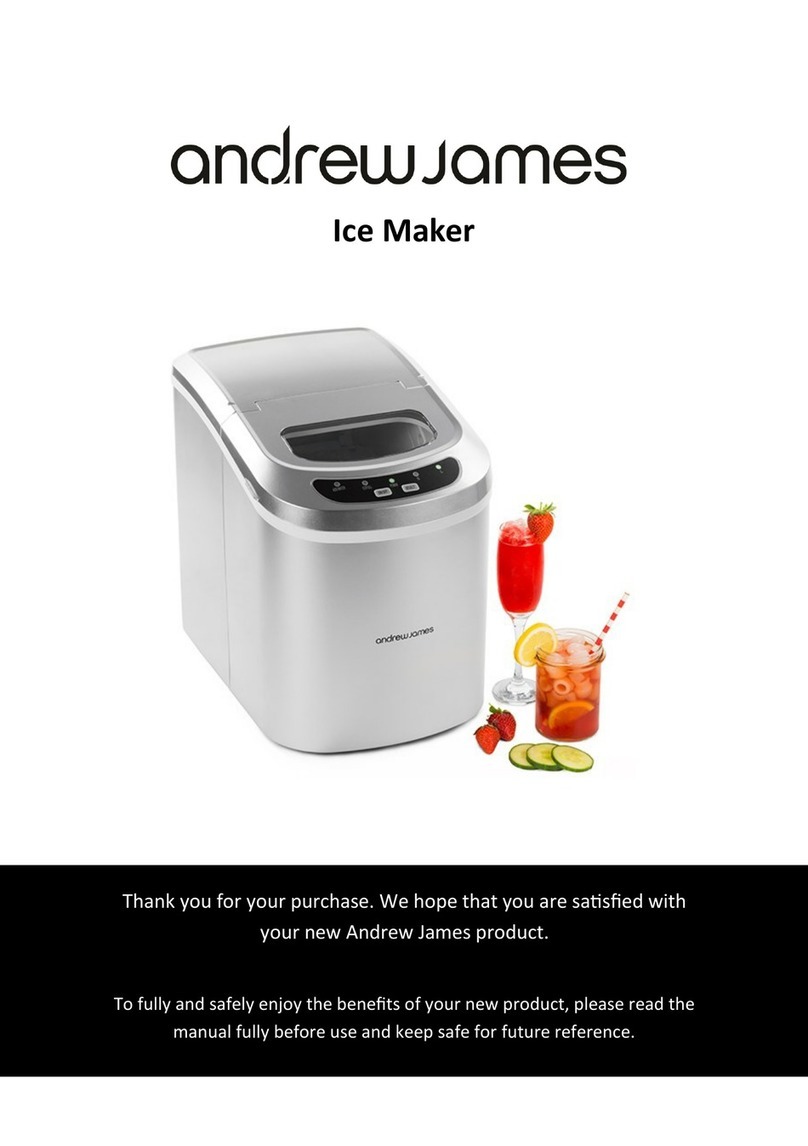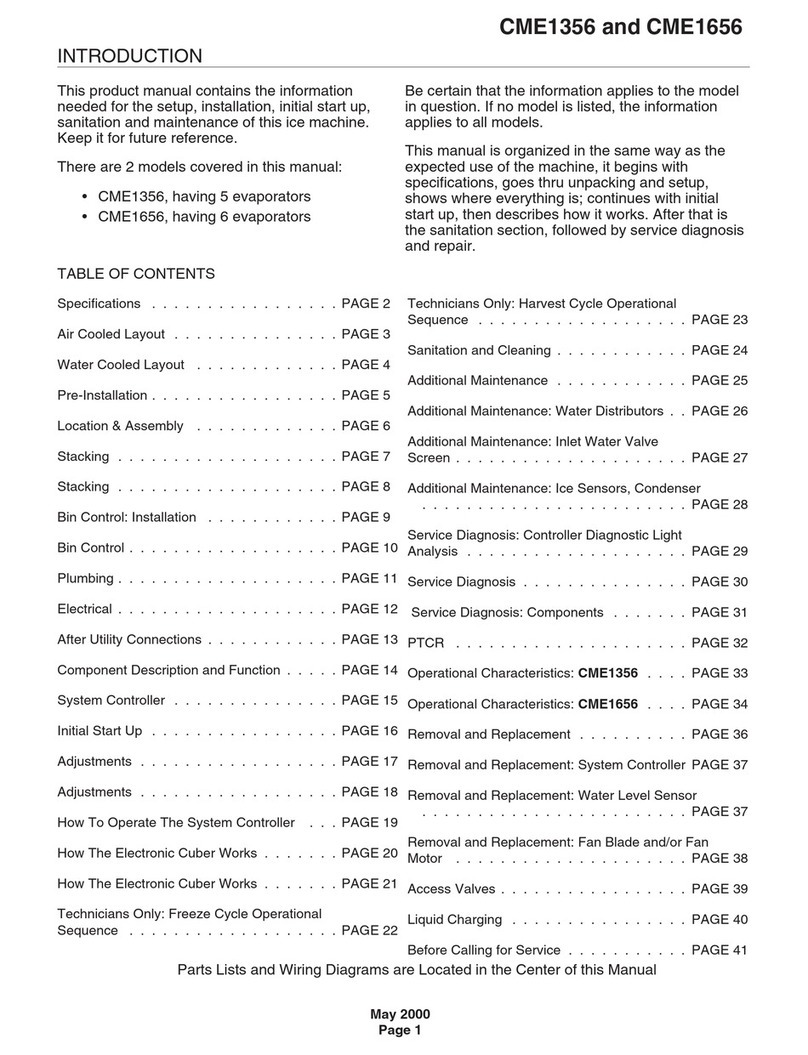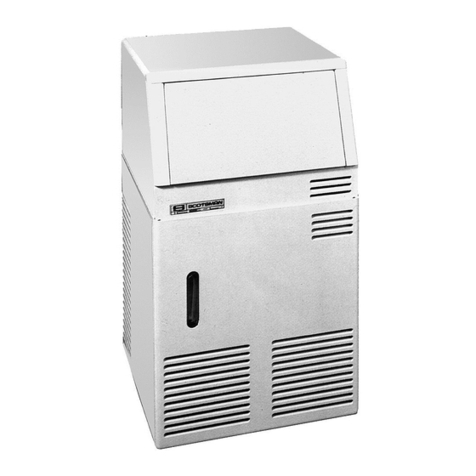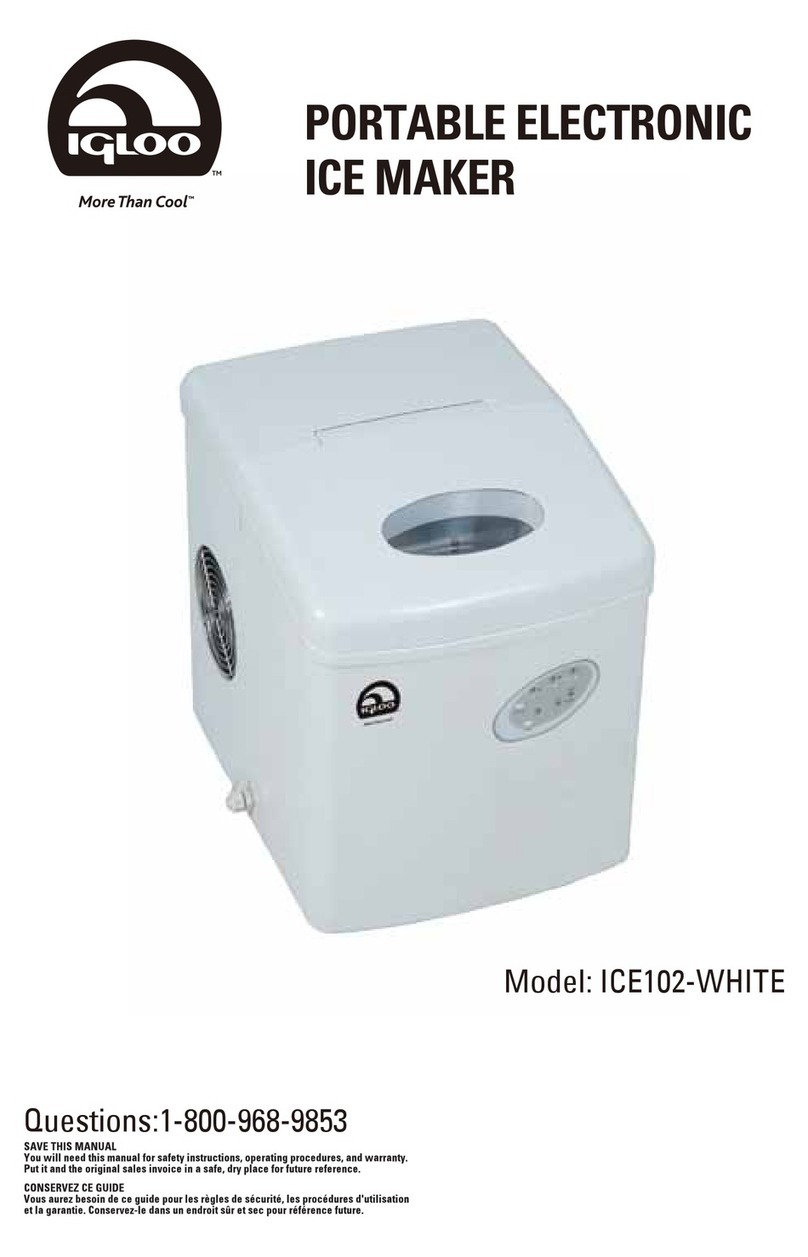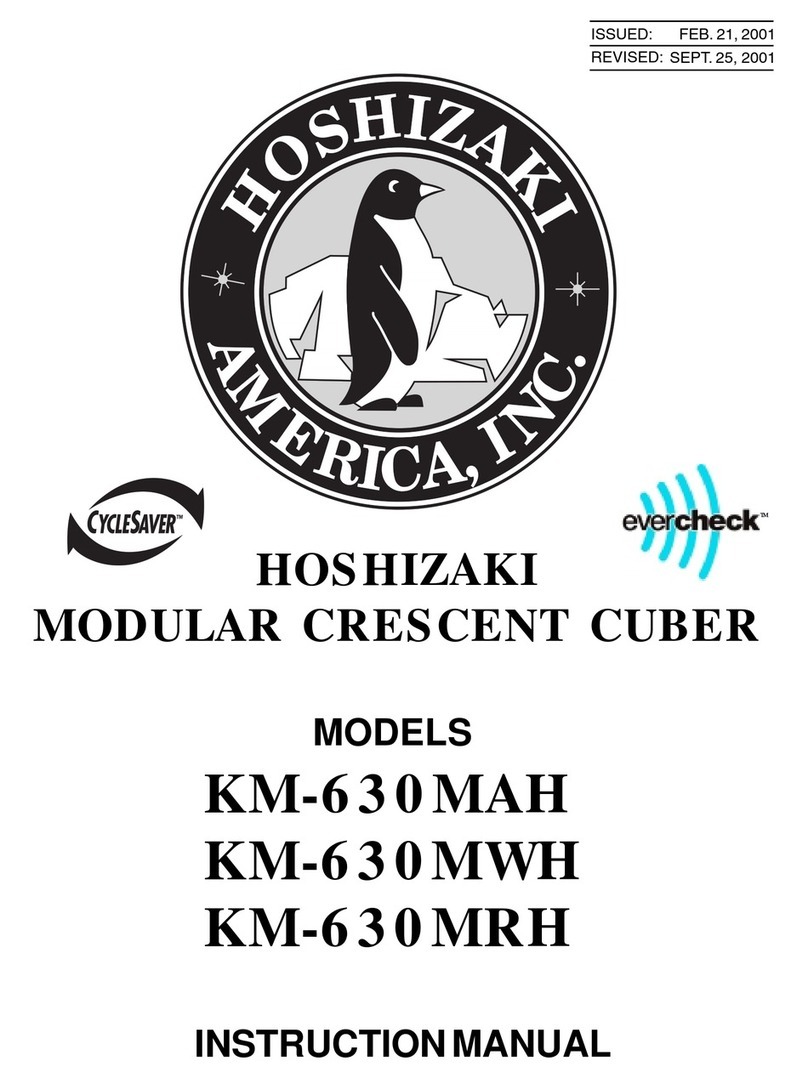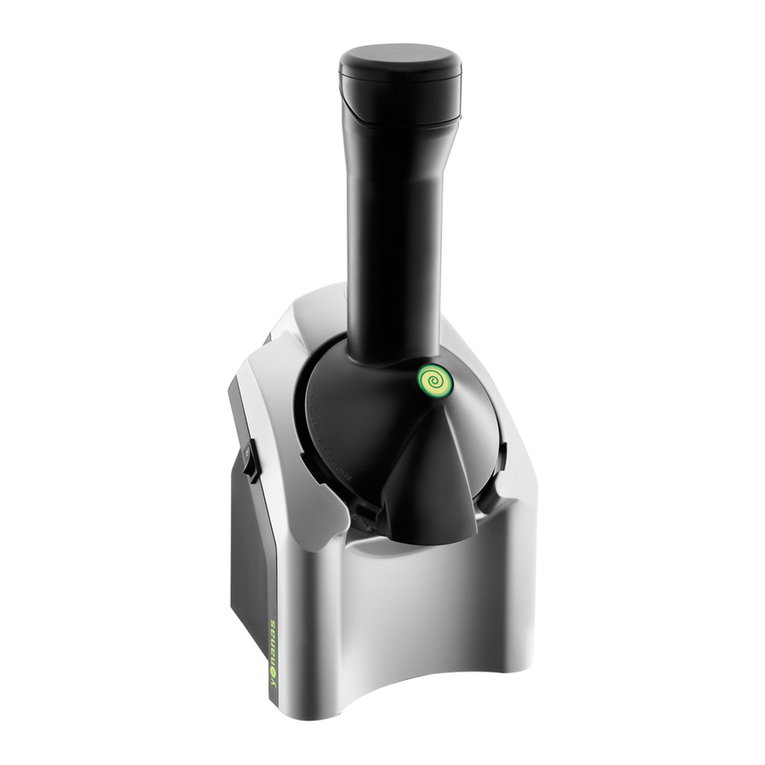
1
Table of Contents
Ice Maker Safety ...............................................................................................2
Important Safeguards .................................................................................3 - 5
Electrical connection ................................................................................4 - 5
Extension cord ..............................................................................................5
Unpacking, etc..............................................................................................5 - 6
Outside air ....................................................................................................5
Water supply .................................................................................................5
Water quality ............................................................................................5 - 6
Location of Parts...............................................................................................7
Installation .................................................................................................8 - 14
Space requirements for installation ...............................................................8
Requirements for power supply ....................................................................8
Requirements for plumbing ...........................................................................9
Gravity drain pipe model..............................................................................10
Drain pump model .......................................................................................11
What to check prior to installation................................................................12
Changing door-opening direction.................................................................13
Installation checklist ....................................................................................14
Specific Features.............................................................................................15
Operation..................................................................................................16 - 17
Initial operation ...........................................................................................16
Using the ice maker ....................................................................................16
Ice shape ....................................................................................................16
Ice container ...............................................................................................16
Operation time ............................................................................................17
Ice production .............................................................................................17
Ice production cycle ....................................................................................17
Ice removal cycle ........................................................................................17
How the ice maker uses water ....................................................................17
Cleaning....................................................................................................18 - 21
Cleaning the nozzle / ice slide / water tank...........................................18 - 19
Cleaning the filters of the water tank andice tank..................................19 - 20
Cleaning the exterior ...................................................................................20
Cleaning the condenser ..............................................................................21
Maintenance.....................................................................................................22
Maintenance in winter .................................................................................22
Adjusting the ice maker ...............................................................................22
Specifications..................................................................................................23
Troubleshooting..............................................................................................24
Limited Warranty.............................................................................................27
